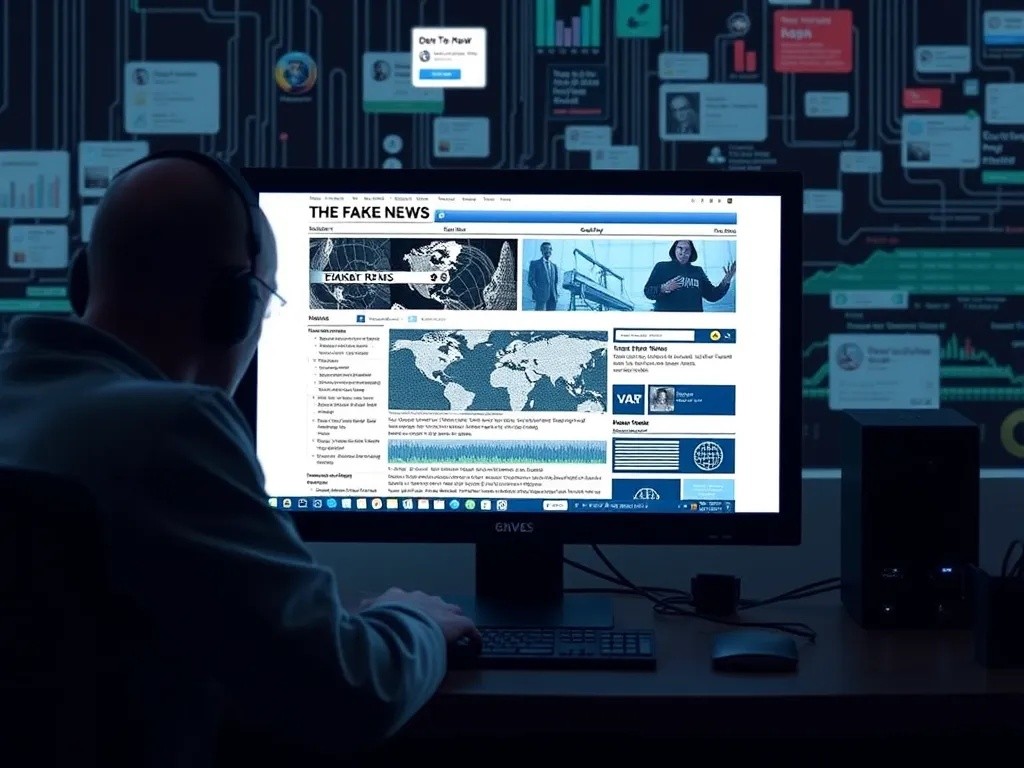In recent years, there has been a significant advancement in the field of Artificial Intelligence (AI) and Augmented Reality (AR). These technologies have become increasingly popular and have the potential to enhance virtual experiences in various fields such as gaming, education, healthcare, and...
Computer Learned to Identify Fake News in Seconds

In an era where misinformation spreads faster than wildfire across social media platforms, researchers have developed a groundbreaking artificial intelligence system capable of detecting fake news with remarkable speed and accuracy. This revolutionary technology can analyze and identify false information within seconds, potentially transforming how we combat the spread of misinformation online.
The Technology Behind Instant Detection
The AI system utilizes advanced machine learning algorithms combined with natural language processing to analyze multiple elements of news content simultaneously. Unlike traditional fact-checking methods that can take hours or days, this computer system processes information at lightning speed by examining linguistic patterns, source credibility, and content structure in real-time.
Key Detection Methods
The system employs several sophisticated techniques to identify potentially false information:
- Linguistic Analysis: The AI examines word choice, sentence structure, and writing patterns that are commonly associated with fabricated content
- Source Verification: Cross-references information with verified databases and credible news sources
- Metadata Examination: Analyzes publication timestamps, author credentials, and website authenticity
- Content Consistency: Checks for logical inconsistencies and contradictions within the text
Impressive Accuracy Rates
During extensive testing phases, the AI system demonstrated remarkable performance metrics that exceed previous automated detection methods. The technology achieved an accuracy rate of approximately 95% when identifying fake news articles, significantly outperforming human fact-checkers in both speed and consistency.
Testing Results
Researchers conducted comprehensive evaluations using thousands of news articles from various sources. The results revealed several key findings:
- The system correctly identified 95% of fake news articles within 2-3 seconds
- False positive rates remained below 5%, ensuring legitimate news wasn't incorrectly flagged
- Processing speed remained consistent regardless of article length or complexity
- The AI showed particular strength in detecting deepfake text and AI-generated misinformation

Real-World Applications
The practical implications of this technology extend far beyond simple news verification. Social media platforms, news organizations, and educational institutions are already exploring ways to integrate this system into their content moderation processes.
Platform Integration
Several major technology companies have expressed interest in implementing this AI system across their platforms. The rapid detection capabilities make it particularly valuable for social media environments where misinformation can spread to millions of users within hours.
News aggregators and search engines are also considering integration to help users identify reliable sources automatically. This could fundamentally change how people consume information online, providing real-time credibility assessments for news content.
Challenges and Limitations
Despite its impressive capabilities, the system faces several challenges that researchers continue to address. The AI occasionally struggles with satirical content, opinion pieces, and culturally specific references that may be misinterpreted as false information.
Areas for Improvement
Current limitations include:
- Difficulty distinguishing between satire and genuine misinformation
- Limited effectiveness with non-English content
- Challenges in processing multimedia content like images and videos
- Potential bias based on training data sources
Future Implications
This breakthrough represents a significant step forward in the fight against misinformation. As the technology continues to evolve, researchers predict even greater accuracy rates and expanded capabilities for detecting various forms of false information.
The development of this AI system marks a crucial milestone in digital literacy and information verification. By providing instant, reliable detection of fake news, this technology could help restore public trust in digital media while empowering users to make more informed decisions about the information they consume and share.
As misinformation tactics become increasingly sophisticated, having equally advanced detection tools becomes essential for maintaining the integrity of public discourse in the digital age.



